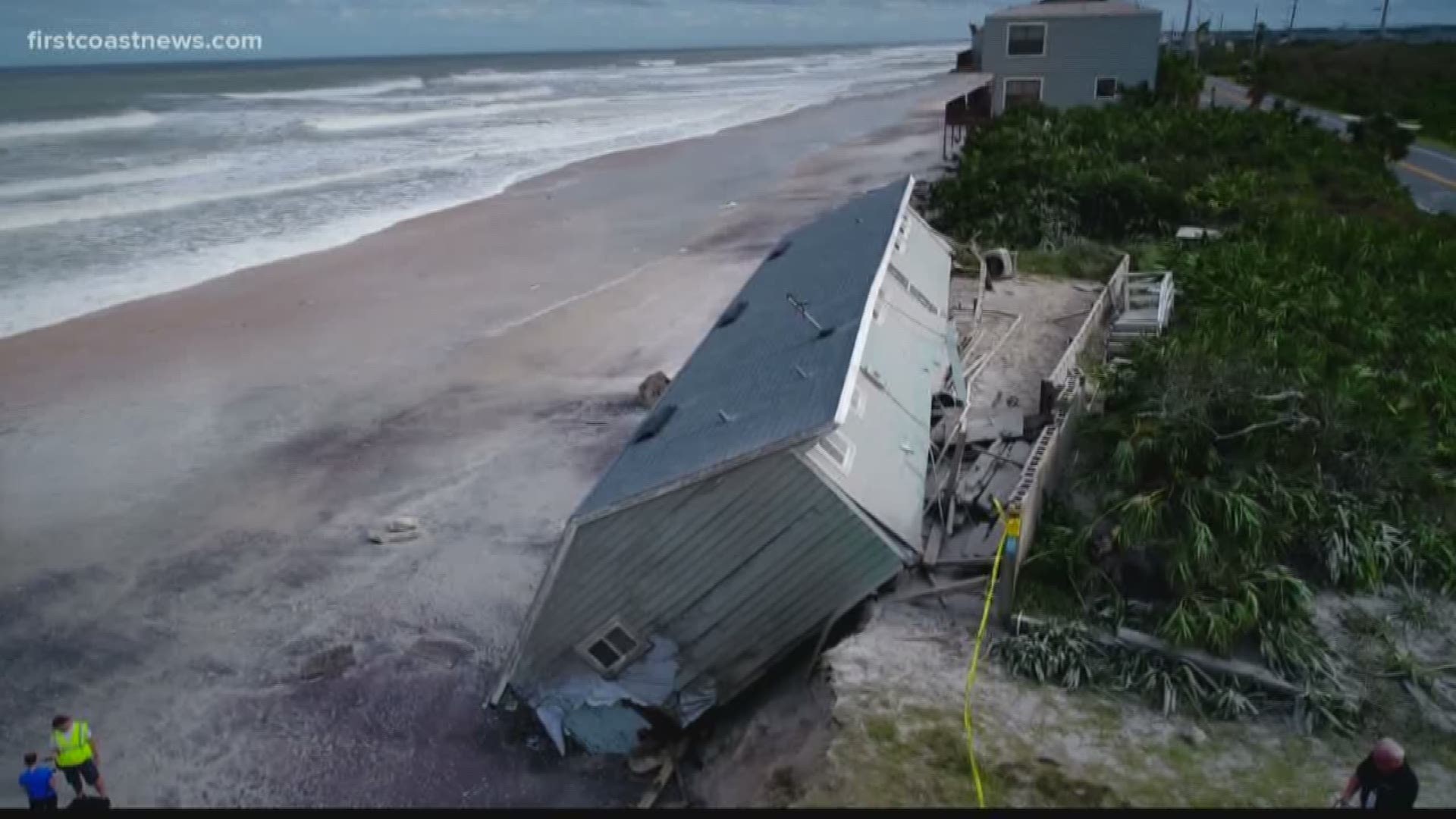ST. AUGUSTINE, Fla. — Your home is your castle, according to English common law.
But when that castle is built on shifting sands, there’s no guarantee of a fairy tale ending.
After hurricanes Matthew and Irma tore through the area, coastal homeowners faced an impossible challenge – reasserting their claim on an ever-shrinking piece of sand, while fighting to hold back the sea.
The result: a ‘great wall’ – not along our Southern border, but our Eastern one. From Vilano to Ponte Vedra Beach, almost every home has, or is building, a seawall.
According to figures obtained by First Coast News, 569 seawall permits have been granted since Hurricane Matthew. Those permits reflect a physical reality -- miles of unbroken barricade -- and a reality of physics. Each property that’s armored demands that neighbors do the same, or suffer the consequences. Simply put, seawalls don’t stop erosion. They just drive it to adjacent beaches, where they often accelerate the rate of sand loss.
“We didn’t want one, but you just kind had to do it,” coastal homeowner Ervin Bullock noted. “Once you get this many sea walls, I don’t think you can survive if you don’t have one.”
As proof, she points to the house at 4010 Coastal Highway, which memorably fell into the sea following hurricane Irma. It had no wall but was located next to a home with a sturdy one.
Wall construction doesn’t come cheap. At a cost of $50,000 to $200,000 per, coastal homeowners are footing a bill that starts around $28 million.
And that doesn’t count home repairs. St. Johns County figures show:
- 13 homes that were more than 50 percent destroyed are being completely rebuilt
- 19 homes damaged beyond repair have been demolished
Hundreds if not thousands of additional permits have been issued for new roofs, replacement decks, and structural repairs.
Big repair costs have not slowed declining property values. Some homes in South Ponte Vedra and Vilano beaches have lost as much as 70 percent of their value since the back to back hurricanes. Many are being used not as primary residences, but as vacation rentals – often touting attributes like private beaches and ocean views.
But perhaps the most surprising number: 10 permits for brand-new homes.
“That’s what should not be happening,” says Jane West, an attorney with expertise in coastal development. “This is a barrier island. It’s supposed to shift, that’s what barrier islands do, and this is not a smart place to be directing growth and issuing new building permits.”
St. Johns County has not attempted to redirect growth away from the coast. Aside from property rights that officials have no appetite to challenge, public works director Neal Shinkre sees a benefit in the rebuild.
“Highway A1A is in the path of erosion,” he observes. “Today it was the houses, tomorrow it’s the infrastructure.”
Shinkre says the rebuild effort is massive – and in some ways just beginning. Two projects are on the horizon – a $150 million, 50-year beach renourishment project, and another one-time sand placement costing $24 million.
“The only way to comprehensively solve the erosion problems Is beach renourishment,” he said. “Our communities are putting their money where their mouth is.”
A small portion of the projects’ costs are being paid by oceanfront homeowners, the rest by state, county and federal taxes.
Protecting the highway is one thing, but West believes allowing new homes on this a strip of sand is the definition of folly.
“I see those two hurricanes as a wake-up call from Mother Nature,” she said. “If people want to go ahead and build their homes right on the ocean, they can go ahead and do that it is their property right to do that. But they need to do so at their own risk and not on the backs of taxpayer dollars. … The county should make clear that financial risk is on them.”

